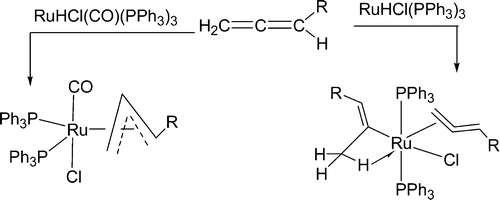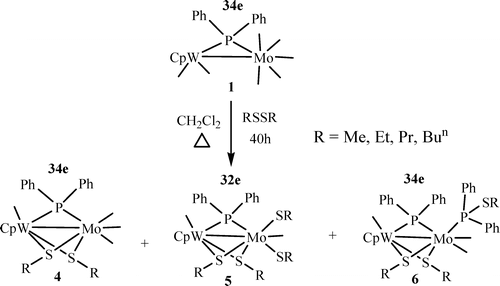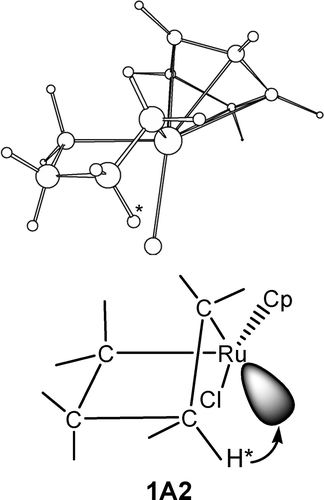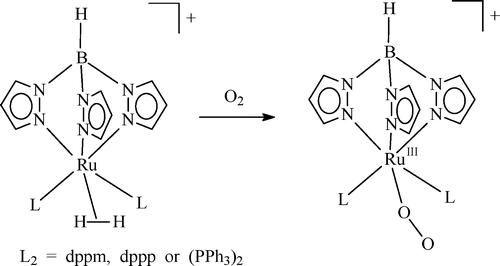Ligand effect on the insertion reactions of allenes with MHCl(CO)(PPh3)(3)and MHCl(PPh3)(3) (M = Ru, Os)
Submitted by Jun Zhu on Thu, 10/31/2013 - 23:58
Treatment of RuHCl(CO)(PPh3)(3) with CH2=C=CHCO2Me gives the allyl complex Ru(77 3 -CH2CHCHCO2Me)CI(CO)(PPh3)(2). The analogous allyl complexes Os(eta(3)-CH2CHCHR)Cl(CO)(PPh3)(2) (R = Ph, CH2Ph) are also produced from the reactions of OsHCI(CO)(PPh3)(3) with CH2=C=CHR. In contrast, MHCl(PPh3)(3) (M = Ru, Os) react with CH2=C=CHR to give the vinyl complexes MCl((C(CH3)=CHR)(CH2 C=CHR)(PPh3)(2) (M = Ru, R = CMe3, M = Os, R = CMe3, Ph, CO2Et).







